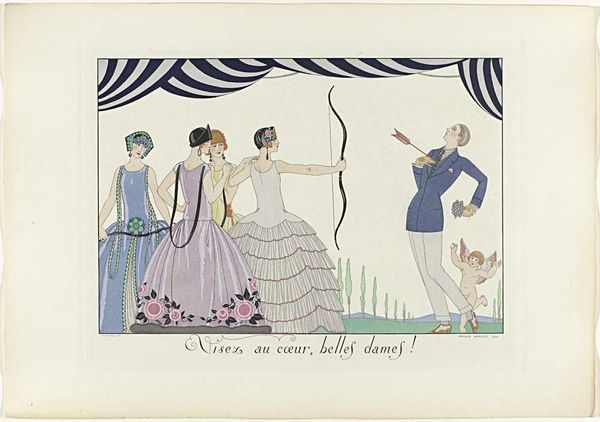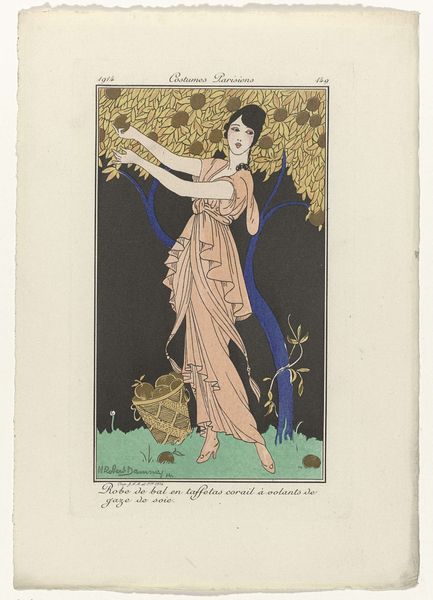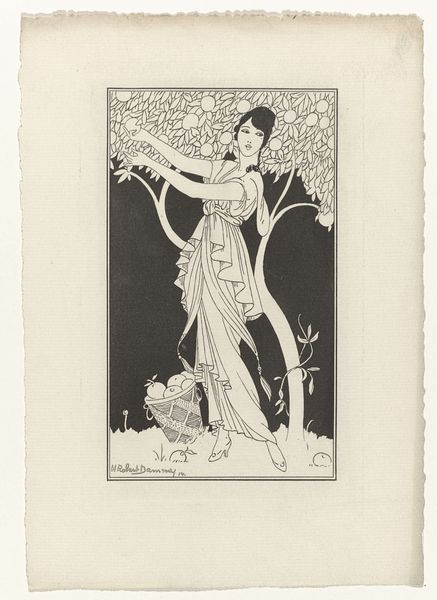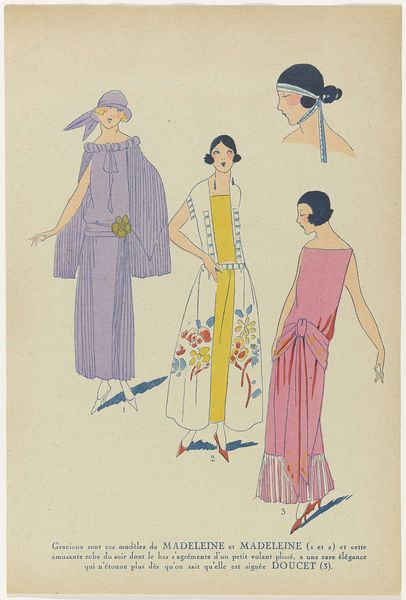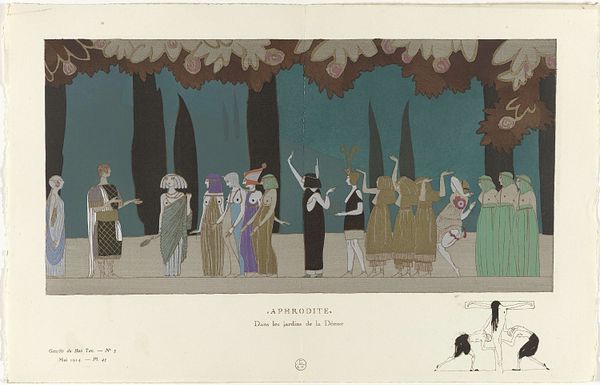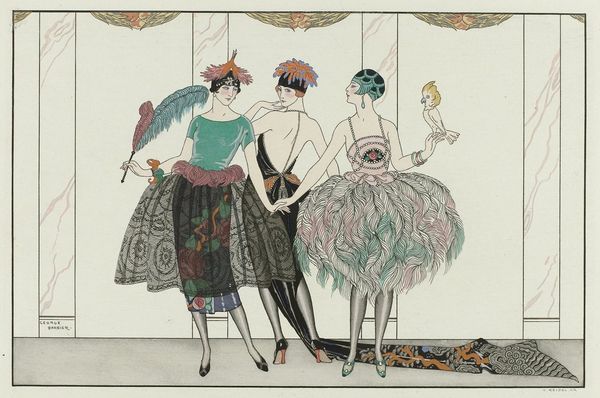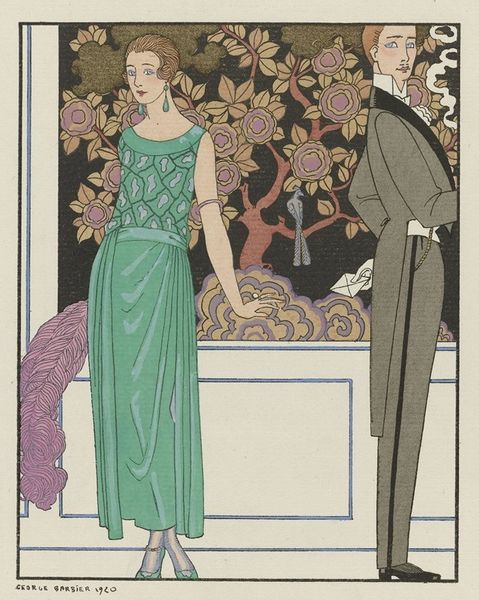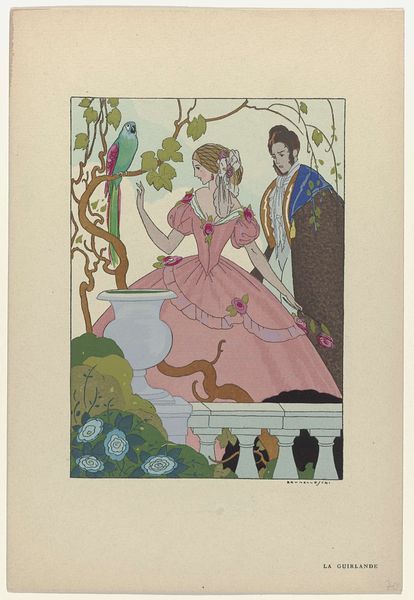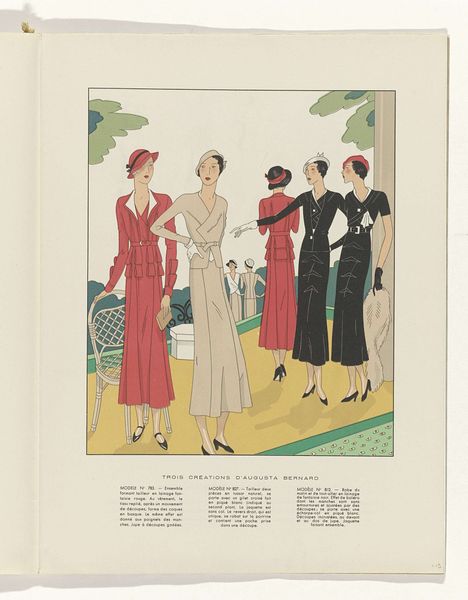
Gazette du Bon Ton, 1914 - No. 5, Pl. 42: L'Arbre de mai / Robes simples pour l'été 1914
0:00
0:00
watercolor
#
portrait
#
tree
#
art-nouveau
#
figuration
#
watercolor
#
watercolour illustration
#
dress
#
bridal fashion
Dimensions: height 243 mm, width 379 mm
Copyright: Rijks Museum: Open Domain
Curator: The watercolor we're looking at today is titled "Gazette du Bon Ton, 1914 - No. 5, Pl. 42: L'Arbre de mai / Robes simples pour l'été," created in 1914 by Francisco Javier Gosé. Editor: My initial impression is one of quiet elegance. There's a subdued palette, almost pastel, and a gentle sense of ritual in the way these women interact with the central tree. Curator: Absolutely. The image comes from an important fashion magazine of the time, the *Gazette du Bon Ton*. It showcases 'simple dresses for summer,' reflecting a shift in fashion toward more relaxed styles. The context of its production and distribution shaped perceptions of beauty and modern life. Editor: "May Tree" itself carries significant symbolism. Throughout Europe, the May tree often marks celebrations of spring and fertility, a return of growth and light. You could see the floral motifs on their dresses acting in harmony, symbolizing rebirth. Curator: Precisely! Gosé subtly blends nature and fashion, underscoring the relationship between women and the natural world. Note also how the stylized poses recall classical depictions of the Graces or nymphs, a nod to enduring visual themes adapted for a contemporary audience. The composition invites the viewer into a space celebrating idealized femininity in a new historical context. Editor: But there’s a looming historical weight here, too. Think of the artwork appearing on the eve of World War I. Those pastel colors and gentle scenes become strangely poignant, framed by the devastation that's about to shatter this very delicate existence that had the leisure to observe high society and summer trends. It becomes not just an object of fashion, but a time capsule holding memories that didn’t stand the test of war. Curator: Yes, it transforms the image. These kinds of ephemeral fashion plates provide critical sociohistorical markers. It is a snapshot of pre-war ideals, of the aspirations and cultural memory of a society on the edge. The careful art nouveau line work, and even its title as we now know it, speaks volumes about art's relation to its era, especially now in retrospect. Editor: Indeed. This "May Tree," innocent on its face, grows in meaning, tinged by an awareness of what soon was to happen, forever.
Comments
No comments
Be the first to comment and join the conversation on the ultimate creative platform.

